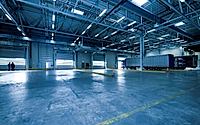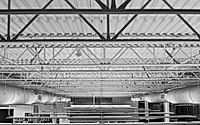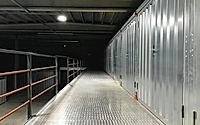The Future of Green Building: Metal Structures in Commercial Spaces
Metal structures play various roles in the future of green building in commercial spaces. Commercial metal buildings are highly sustainable for a myriad of reasons, but here are some aspects that shine above the rest:
High Energy Efficiency
Reducing energy consumption plays a crucial role in decreasing the carbon footprint of commercial buildings. Metal buildings achieve this in various ways.
First, some insulation systems fit very well with these types of buildings and prevent heat transfer. Cool roofs can also lower the temperature of a building as it absorbs less sunlight. Natural lighting strategies can reduce artificial light requirements and, therefore, energy costs, while HVAC systems in metal buildings also aid in energy efficiency, economy, and comfort.
Renewable Energy Integration
Metal structures often come with large roof areas. These areas can easily integrate renewable energy systems. For example, you can install solar panels or wind turbines and generate clean and renewable electricity. This can reduce the dependency on fossil fuels and actively contribute to carbon neutrality.
Recyclability and Life Cycle
You can easily recycle metal buildings and use their components later for other projects and purposes. This high rate of recyclability makes metal structures sustainable. These types of buildings last for at least 50 years and can even reach 100 if properly maintained.
Green Materials and Low-VOC Finishes
By using sustainable and environmentally friendly materials, you can create all sorts of metal buildings. This includes using responsibly sourced metal products or recycled steel. Metal buildings can also benefit from low-volatile organic compound (VOC) finishes.
These types of finishes aren’t as harmful as other harmful chemicals and can improve indoor air quality. Therefore, these sustainable buildings also have the benefit of contributing to healthier work environments.
Water Efficiency
Traditional construction methods involve the usage of plenty of water for the mixing of cement and other materials. However, water demand isn’t as high when it comes to metal buildings. Because of this, metal buildings can be viewed as promoting sustainable water management, especially if you integrate other systems such as rainwater harvesting technologies.
Smart Building Technologies
Whether you want to optimize operational efficiency, lower energy usage, or increase comfort, metal structures can be equipped with various smart building technologies to do so. Among the most commonly used smart building technologies used in these types of buildings include:
- Smart thermostats
- Energy consumption monitorization and control systems
- Automated lighting systems
- Occupancy sensors
Urban Heat Island Mitigation
The urban heat island effect refers to the phenomenon of increased temperatures in urban settlements. However, metal structures can be used to mitigate this issue. For example, most metal structures use cool roofing systems to reduce sunlight/heat absorption.
Green Roof and Green Wall Integration
Green buildings with metal structures can contribute to the well-being and health of all occupants as they can incorporate some of the following elements:
- Proper ventilation
- Natural light
- Good indoor air quality
- Outdoor views
All of these elements can increase productivity and overall well-being. No matter how you look at it, metal buildings are a flexible and highly efficient solution for green buildings in commercial spaces and more.
- by Matt Watts



